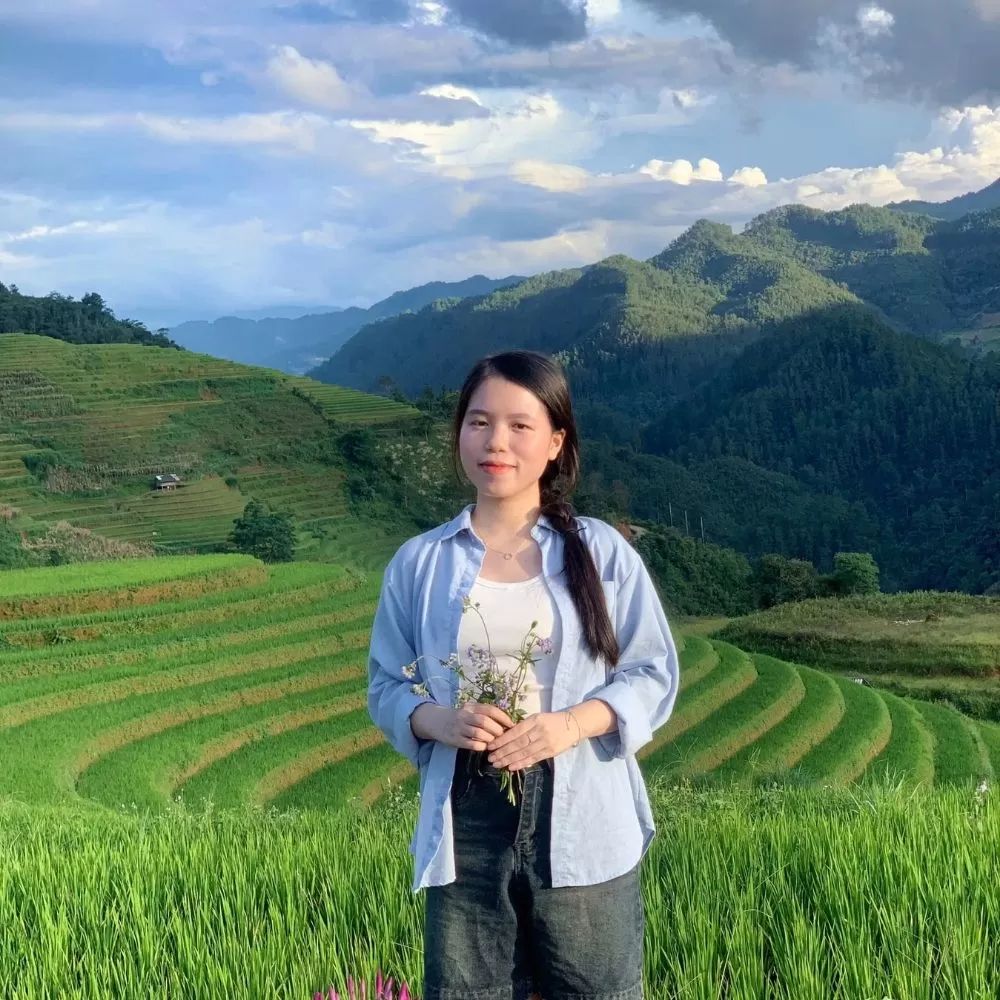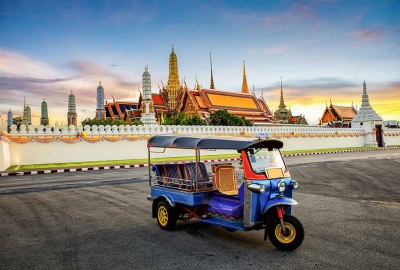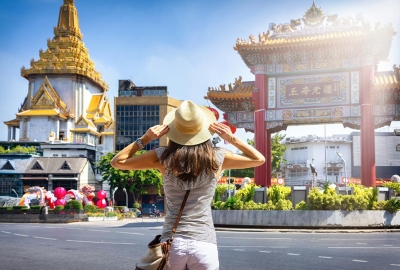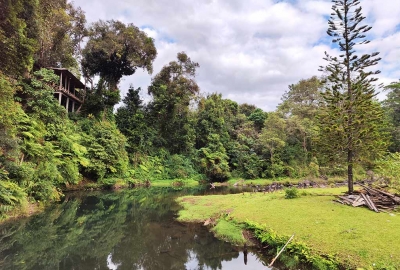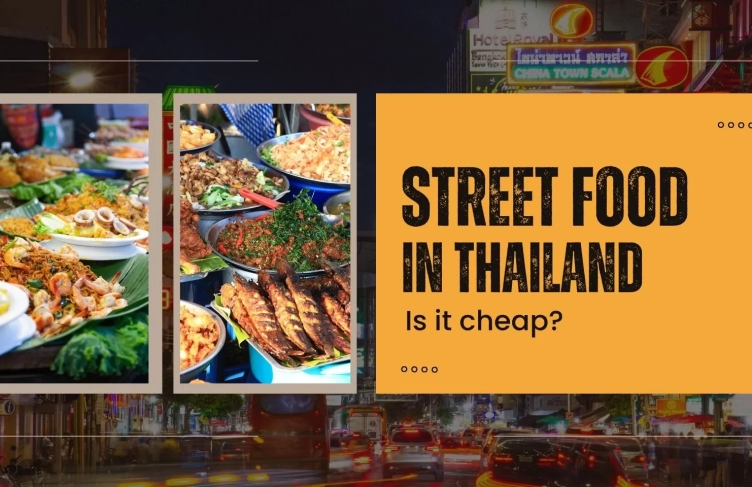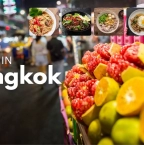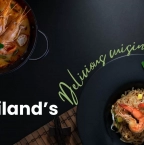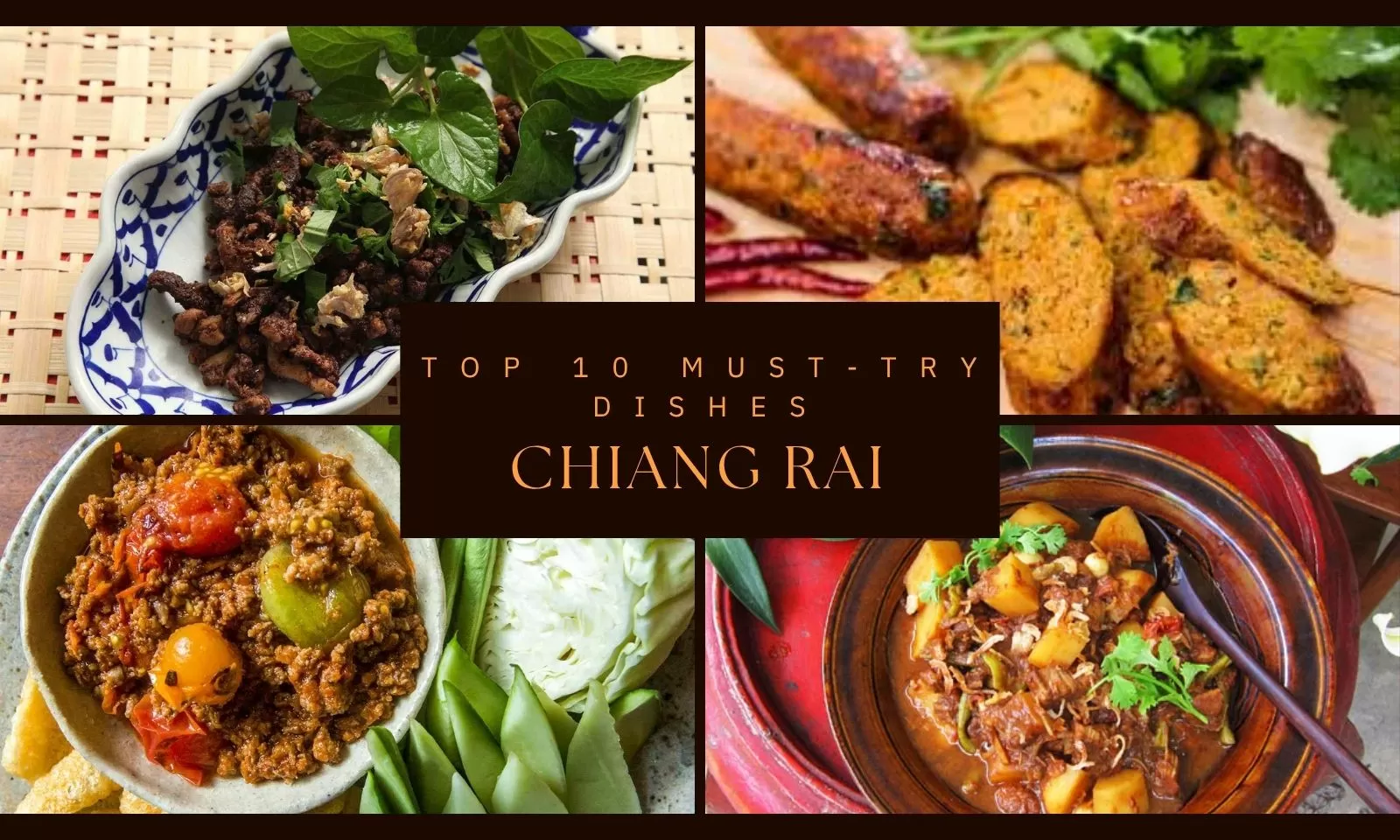
Top 10 must-try dishes in Chiang Rai

Chiang Rai is not only famed for its dazzling white temples and serene landscapes but also for its rich and flavorful cuisine. The dishes in Chiang Rai reflect the essence of Northern Thai culture, blending fresh local ingredients with time-honored cooking techniques to create bold, unforgettable flavors.
In this article, you'll discover 10 must-try dishes that showcase the unique culinary identity of Chiang Rai—from spicy noodle soups to fragrant coconut-based desserts. Get ready to explore and add these local delights to your foodie adventure in Northern Thailand!
Table of Contents
Authentic northern flavors from Chiang Rai
Before diving into the top dishes in Chiang Rai, it’s important to understand why this northern city is such a culinary gem. The food here is deeply rooted in Lanna traditions, influenced by the nearby borders of Myanmar and Laos and shaped by the customs of local hill tribes. This cultural blend results in bold, earthy flavors that are distinct from what you’ll find in southern or central Thailand.
Regional ingredients like wild herbs, fermented fish and soybean pastes and sticky rice define the local palate. The dishes in Chiang Rai tend to be simpler and spicier than those in Chiang Mai or Bangkok, often tied to seasonal produce and home-style cooking. For travelers seeking a truly authentic taste of northern Thailand, the distinct Chiang Rai cuisine is not to be missed.
Let’s explore ten must-try dishes that best represent the rich culinary traditions of this northern city.
Top 10 must-experience dishes in Chiang Rai
Chiang Rai’s food scene is a rich tapestry of spicy dips, herb-laced meats and traditional noodle soups that are steeped in centuries of local tradition. Each dish is a reflection of the region’s agricultural bounty, ethnic diversity and cultural pride. Let your taste buds explore!
Khao Soi
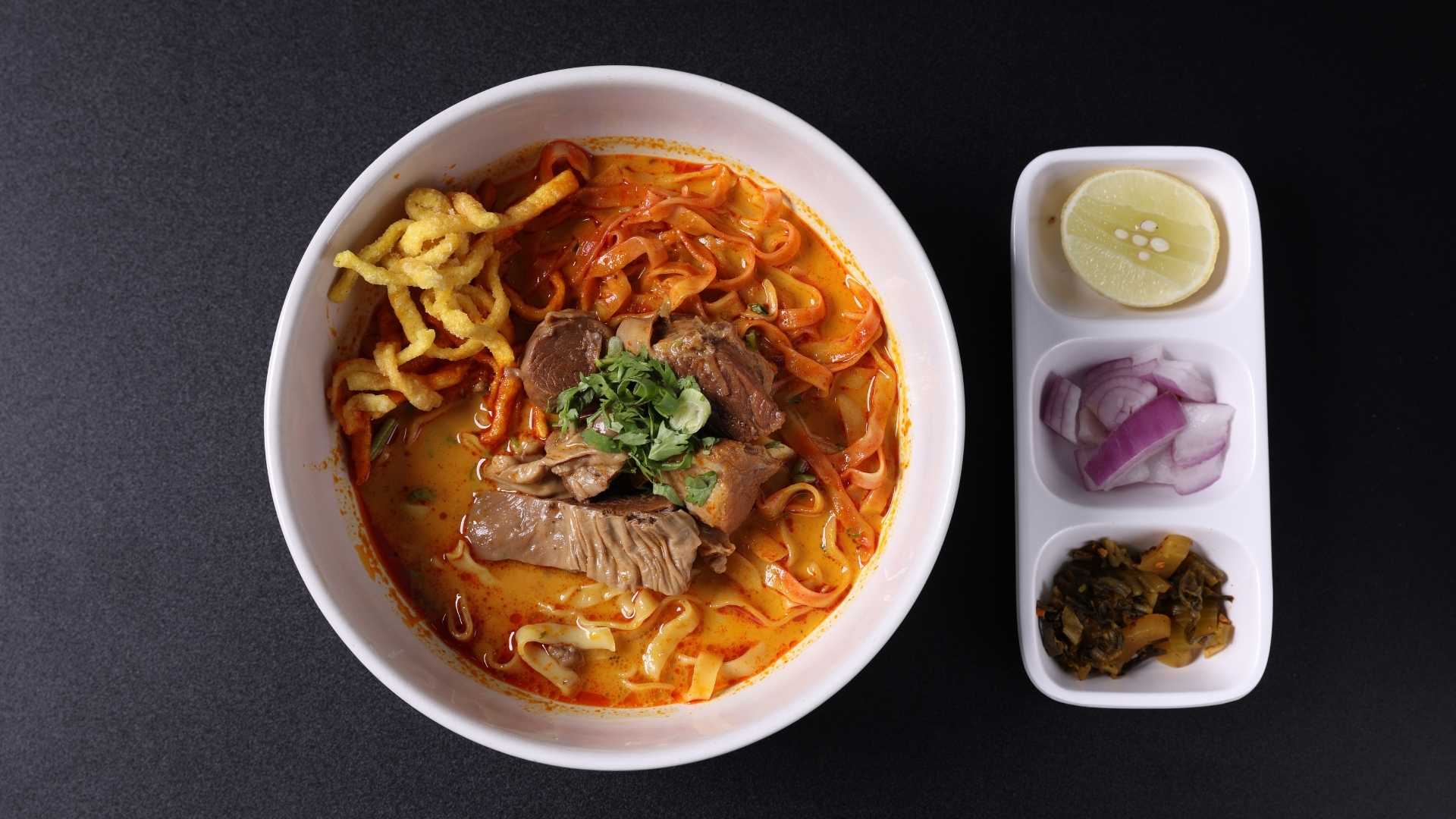
A soul-warming Northern Thai classic, Khao Soi is a rich noodle dish that perfectly balances creamy coconut curry with a spicy kick. It features tender egg noodles in a fragrant broth, topped with crispy fried noodles, tangy pickled mustard greens, sliced shallots and a squeeze of lime. While Chiang Mai might be more famous for it, Chiang Rai’s version often uses local spice blends and homemade chili oil, giving it a unique, rustic depth.
Where to try: Many local restaurants serve Khao Soi, but try Phor Jai or Khao Soi Phor Jai, both of which are famous for their authentic versions of this dish.
Sai Ua
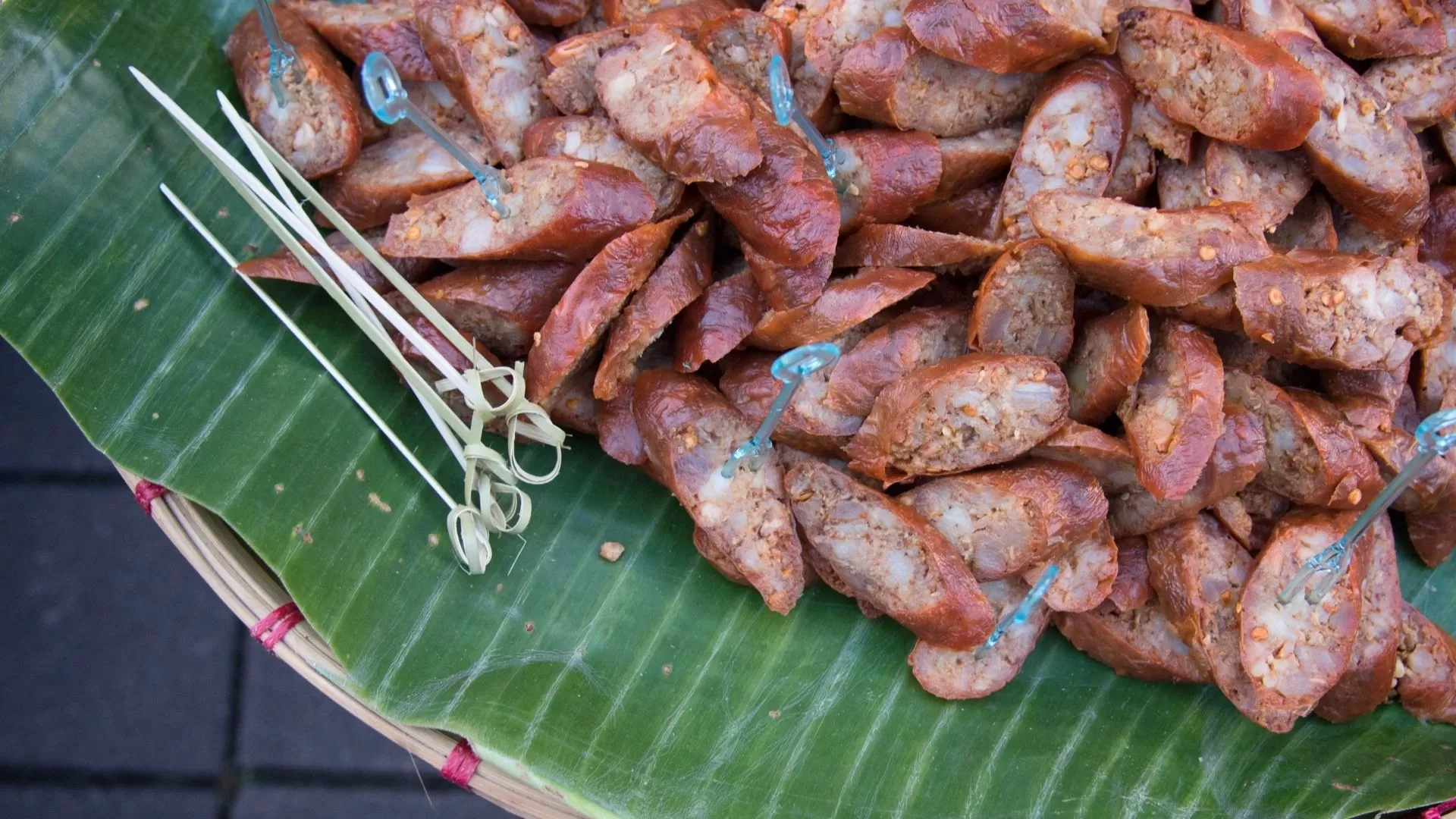
Sai Ua is a distinctive grilled sausage bursting with flavor. Made from minced pork, it's heavily seasoned with aromatic lemongrass, kaffir lime leaves, garlic, chilies and fresh local herbs. The result is a fragrant, slightly spicy and incredibly addictive sausage. Found at markets and restaurants across Chiang Rai, it’s usually served sliced with sticky rice and various chili dips—an excellent introduction to Northern Thai cuisine's herb-forward profile.
Where to try: Chiang Rai Night Bazaar and the Saturday Walking Street Market are great places to find Sai Ua. Look for street vendors selling freshly grilled sausage.
Nam Prik Noom and Nam Prik Ong
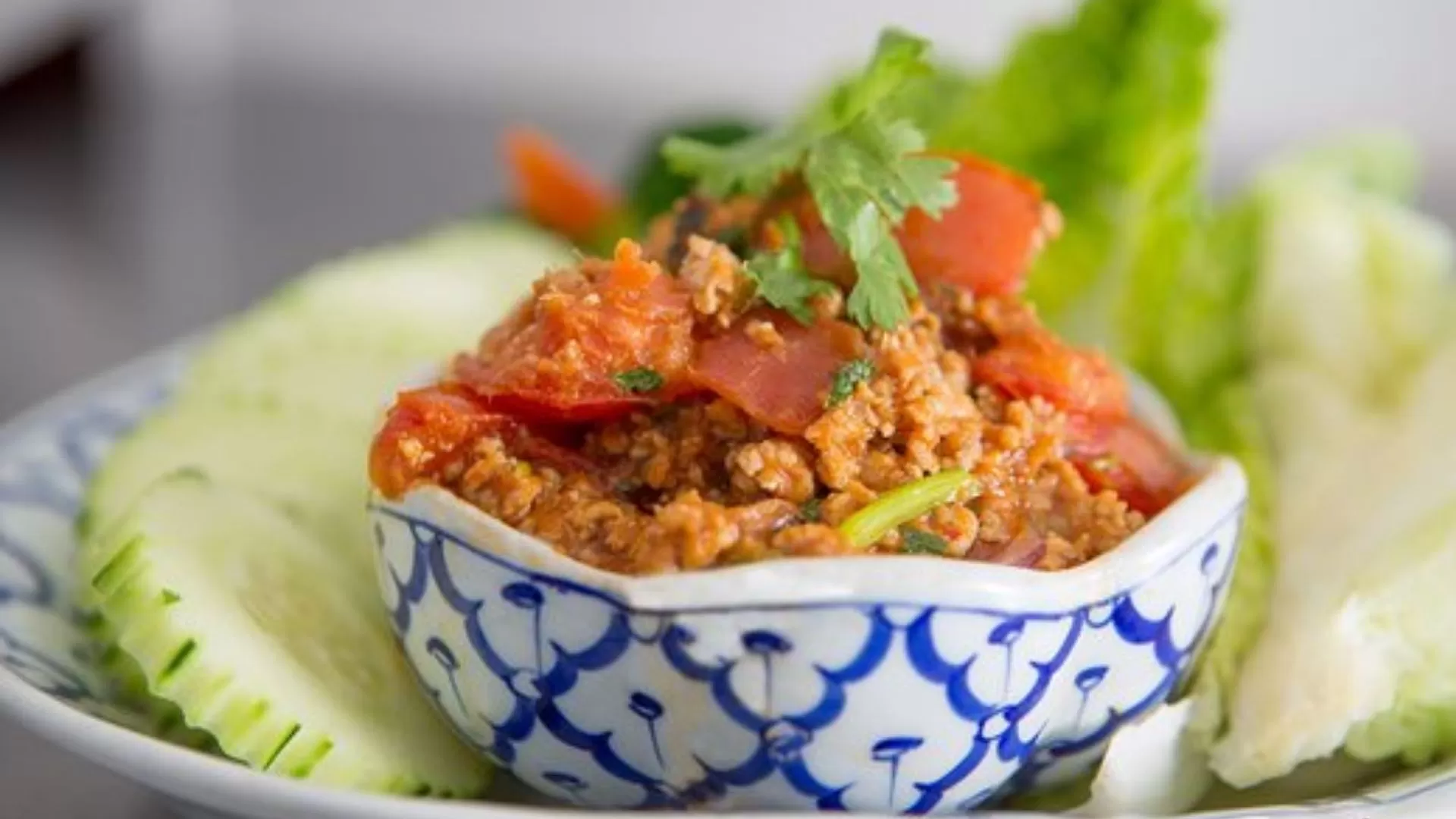
These two chili dips are fundamental to any Northern Thai meal, offering a powerful burst of flavor and heat. Nam Prik Noom is a smoky green chili dip made from grilled chilies and garlic, while Nam Prik Ong is a richer, tomato-based dip with minced pork and chili paste, often including fermented soybeans. Both are served with warm sticky rice, an assortment of fresh and blanched vegetables and crispy pork rinds, truly representing the bold flavors of dishes in Chiang Rai.
Where to try: Try Nam Prik at local markets like Chiang Rai Fresh Market or the Saturday Walking Street Market, where vendors often sell these dips alongside fresh vegetables.
Larb Muang
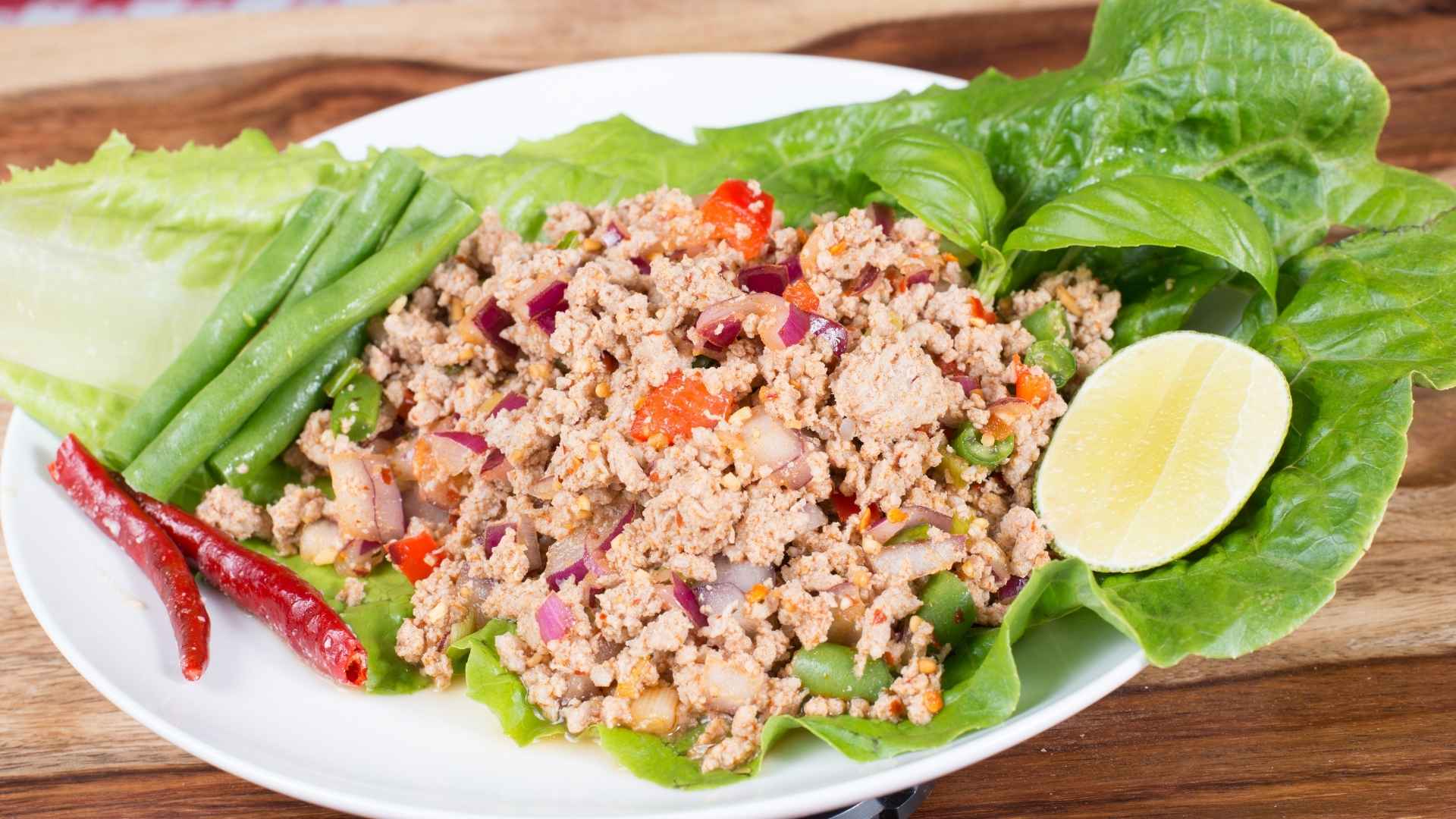
Unlike the more zesty Isaan larb, Larb Muang is distinctly different. It's typically made with ground pork or beef and a complex blend of dried spices like cumin, star anise and chili powder. This version is intensely savory and often cooked rather than served raw. Traditionally enjoyed at local gatherings, it beautifully reflects the deep-rooted culinary traditions of Lanna cuisine.
Where to try: Huen Jai Yong is a popular restaurant in Chiang Rai known for its authentic Northern Thai cuisine, including Larb Muang.
Gaeng Hang Lay
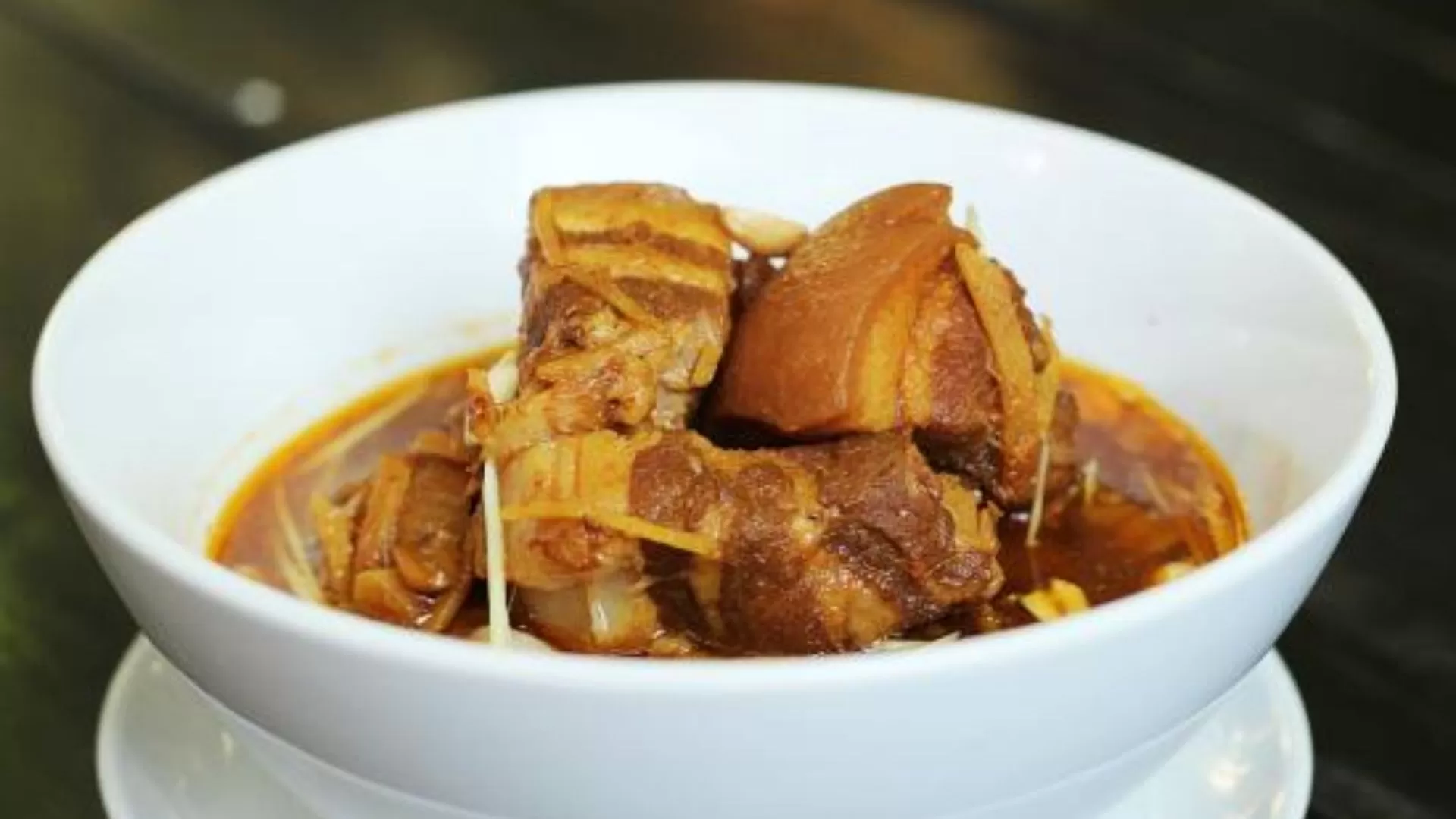
This rich and tangy curry originated from Myanmar and has been lovingly adapted into Northern Thai cuisine over generations. Gaeng Hang Lay features slow-cooked pork belly simmered in a complex blend of ginger, garlic, tamarind and Burmese curry powder. It contains no coconut milk, but its flavors are incredibly deep, complex and harmonious, making it one of Chiang Rai’s most comforting dishes.
Where to try: Lu Lam Restaurant serves an excellent version of Gaeng Hang Lay, as do many restaurants offering Northern Thai or Lanna cuisine.
You may want to read:
Kaeng Pak Waan
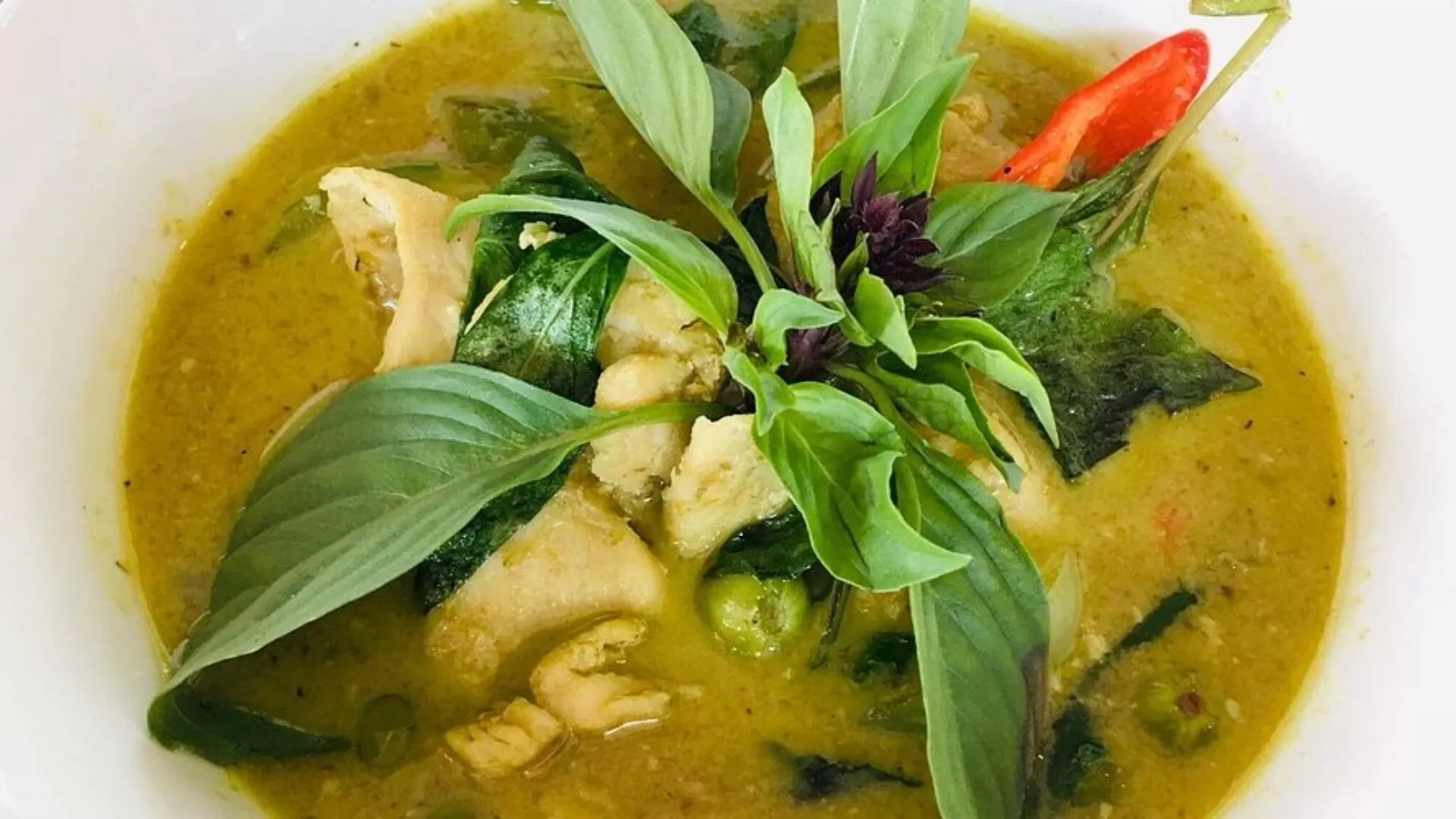
A lighter yet highly nutritious option in Northern cuisine, Kaeng Pak Waan is a delicate soup made primarily from sweet leaf (Pak Waan), known for its subtle sweetness. It's often prepared simply with eggs or mushrooms and seasoned minimally with fish sauce and garlic, allowing the natural sweetness of the greens to shine. It offers a refreshing balance to richer, meat-based meals.
Where to try: Visit local markets or small family-run eateries in Chiang Rai to find Kaeng Pak Waan, as it’s a more traditional, homemade dish.
Khanom Jeen Nam Ngiao
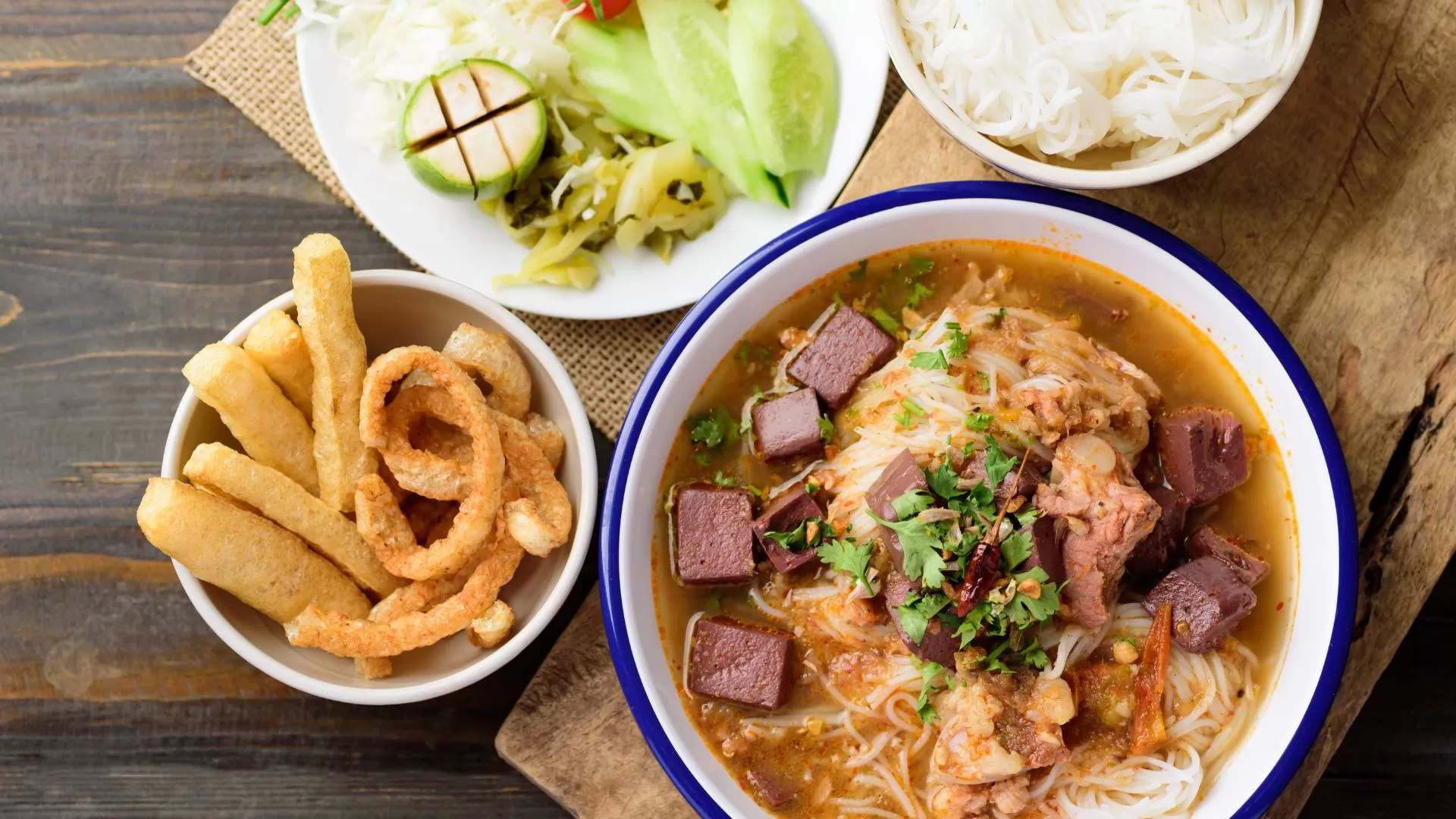
A true Northern specialty, this noodle dish features thin, fermented rice noodles (Khanom Jeen) in a distinctive pork and tomato broth. The unique flavor comes from ingredients like dried cotton flower and fermented soybeans, resulting in a complex, slightly sour, spicy and hearty soup. Toppings often include pork ribs and fresh herbs, making it a beloved comfort food in Chiang Rai.
Where to try: Jok Sompet and Khanom Jeen Boran Ban Doi are popular spots to try this authentic dish.
Tam Khanun
Tam Khanun is a savory and unique salad made with shredded young jackfruit, herbs, garlic and often ground pork or shrimp paste. It's stir-fried rather than raw, giving the jackfruit a wonderfully meaty texture and an umami-packed flavor. Seasoned with local spices, this dish is typically served warm and pairs perfectly with sticky rice.
Where to try: You can find Tam Khanun at local markets or in traditional restaurants that serve Northern Thai cuisine.
Sticky rice with various dips and curries
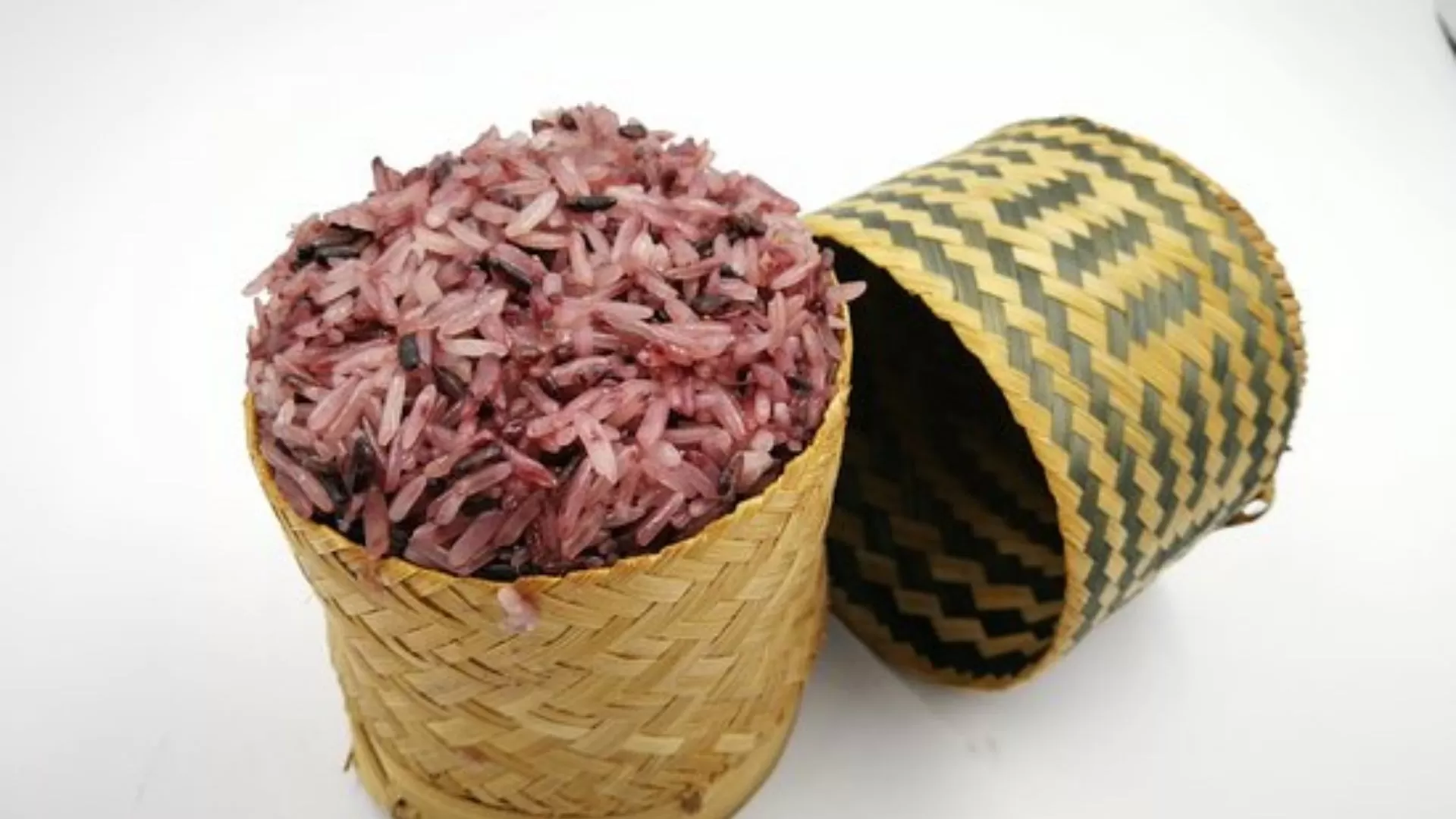
In Chiang Rai, sticky rice (Khao Niao) is much more than just a side dish—it's the absolute heart of every meal. Its unique glutinous texture makes it perfect for forming small balls, used as edible scoops for an array of intensely flavorful chili dips (Nam Prik), grilled meats and various curries. The communal act of eating sticky rice symbolizes tradition and togetherness in Northern Thailand.
Where to try: Chiang Rai Night Bazaar is a great place to experience the local culture of eating sticky rice with different sauces and sides.
Khao Lam
A cherished Northern dessert, Khao Lam is made by stuffing sticky rice, rich coconut milk and sometimes black beans into hollow bamboo tubes, then roasting them over charcoal. The bamboo imparts a subtle, earthy aroma, while the slow cooking transforms the rice into a wonderfully creamy and slightly caramelized treat. You'll find it at markets and roadside stalls, making for a perfect, authentic sweet ending to your culinary adventure.
Where to try: Street vendors near the Saturday Walking Street Market and other markets in Chiang Rai.
Ready to explore these authentic flavors with ease? Enhance your trip with a specialized food tour or a comprehensive Chiang Rai experience from Hanoi Voyages. Discover more about what to eat in Chiang Rai by checking out our top tour options below:
|
Tips for enjoying local dishes in Chiang Rai
Dining in Chiang Rai is more than just eating—it’s about immersing yourself in centuries-old culinary traditions shaped by Lanna heritage and mountain culture. To fully appreciate the region’s bold flavors and rustic charm, these essential tips will help you savor Chiang Rai’s cuisine like a true insider.
Explore the street food stalls
Some of the best dishes in Chiang Rai are found at local markets and street stalls. Don’t hesitate to try khao soi or sai ua at a night bazaar or roadside vendor—it’s often more authentic and flavorful than in tourist restaurants.
Learn the local spice levels
Northern Thai food isn’t always spicy, but when it is, it can be fiery. If you're sensitive to heat, ask for "mai phet" (not spicy) or "phet nit noi" (a little spicy) when ordering.
Dine with locals
Sharing a meal at a small family-run restaurant or homestay offers more than just food—it’s a chance to connect with the culture and hear stories behind each dish.
Don’t skip the dips and condiments
Dishes like nam prik noom or fermented chili pastes may look simple but are central to the Northern Thai experience. Pair them with sticky rice and fresh vegetables for an authentic taste.
Try a cooking class
Many local chefs offer half-day cooking classes where you can learn to prepare signature dishes like gaeng hang lay or tam khanun. It’s a great way to bring Chiang Rai’s flavors home with you.
Chiang Rai’s culinary landscape is a vibrant testament to its rich history and diverse cultural influences. From the comforting warmth of Khao Soi to the aromatic spices of Sai Ua and the earthy depth of Larb Muang, each of the dishes in Chiang Rai offers a unique story and an unforgettable taste of Northern Thailand.
Ready to savor these authentic flavors yourself? Let Hanoi Voyages guide your next culinary adventure to discover the true essence of Chiang Rai food.
Dream about your trip to Asia, in private
We are here to make it happen with youFREE QUOTE, WITHOUT OBLIGATION

